In today's automotive designs , air conditioning is a standard comfort configuration. Functionally speaking, today's automotive air conditioners actually integrate heating, cooling and ventilation functions into a car heating, ventilation and air conditioning (HVAC) system (this article will be referred to as "automotive air conditioning" for short). From the adjustment method, car air conditioners include manual air conditioners, semi-automatic air conditioners and automatic air conditioners. This article will focus on automotive automatic air conditioning, introduce the corresponding power supply, motor drive and discrete components of ON Semiconductor, to help designers choose the right product for automotive automatic air conditioning design.
This article refers to the address: http://
Automotive air conditioning systems include different subsystems such as heating and ventilation systems, air conditioning refrigeration, and electronic control units (ECUs). In the heating and ventilation subsystem, fresh air is passed from the outside to the inside of the cabin to enhance passenger comfort and safety. The incoming air flows through a small heating core that is connected to the engine's cooling system. The air conditioning and refrigeration subsystem transfers the heat inside the vehicle to the outside air by continuously evaporating and condensing, reducing the temperature inside the vehicle while reducing the humidity. Figure 1 is a typical automotive automatic air conditioning interface, and Figure 2 is a system architecture diagram.
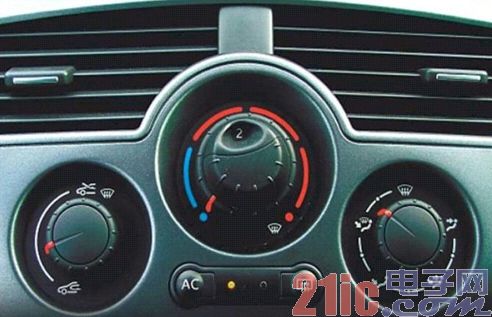
Figure 1. Typical automotive automatic air conditioning user interface

Figure 2: Automotive air conditioning system architecture
Power supply for car air conditioner
As shown in the automotive air conditioning system architecture diagram of Figure 2, the automotive air conditioning system needs to supply power to the microcontroller (MCU), various sensors, drivers, memories, and the like. Common car battery voltages include 12 V or 24 V. If the 24 V system is used for power supply, high-voltage products are needed to enhance thermal management, improve power efficiency and control costs. If powered by a 12 V system, the cost is more advantageous, requiring lower quiescent current and an optimized package. Different supply voltages also relate to different automotive air conditioning power supply architecture diagrams, as shown below. But regardless of the architecture, a 24 V or 12 V voltage is converted to 5 V using a low dropout (LDO) regulator. ON Semiconductor offers lineups of LDO products, and Table 1 lists LDOs suitable for automotive air conditioning applications. They are able to withstand high input voltages, provide low quiescent current, and pass the automotive industry AEC-Q100 certification to meet automotive air conditioning applications.

Figure 3: Automotive Air Conditioning Power Conversion Architecture
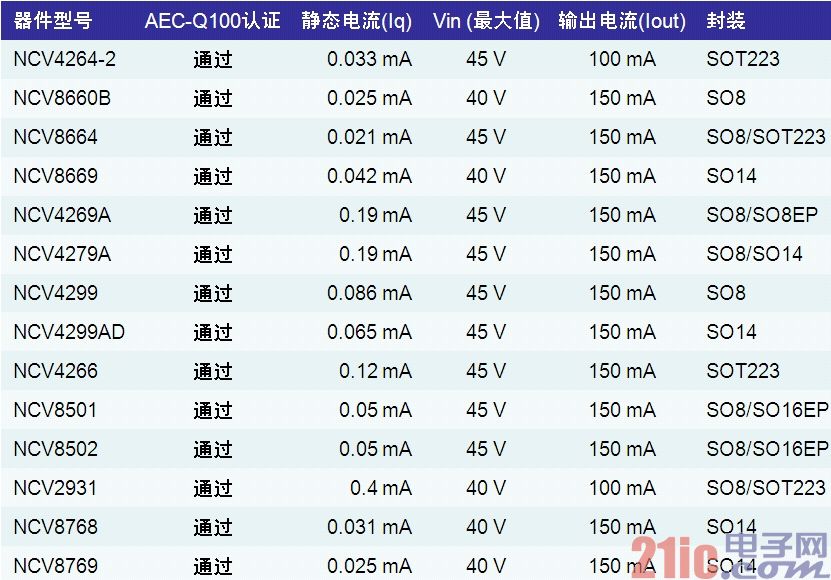
Table 1: List of LDO Regulators for ON Semiconductor Applications in Automotive Air Conditioning
The external sensor in the car must use a stable power supply, that is, the LDO follows the regulator (or voltage follower). These LDO follower regulators must be adequately protected against faults such as shorts to ground, shorted cells, reverse battery, etc. At the same time, their output voltage must be consistent with the reference voltage. ON Semiconductor offers a fully protected voltage follower, the NCV8184, to power external sensors. The NCV8184 is a monolithic LDO-following regulator that provides an adjustable buffered output voltage that closely matches the reference input voltage (accuracy of ±3 mV). The device's output current capability is 70 mA, with a typical voltage drop of only 0.35 V at 50 mA and a quiescent current of only 70 μA.
Motor drive for automotive air conditioning
Depending on the configuration requirements of different regions and different vehicle manufacturers, automotive air-conditioning damper actuators can use different topologies, such as DC motors, unipolar stepper motors and bipolar stepper motors.
The most common damper actuator is a DC motor with an integrated position sensor that feeds back the damper position signal to the microcontroller. To control the forward or reverse rotation of a DC motor, two high-side (HS) switches and two low-side (LS) switches are required to form a full-bridge circuit. Typically, these high-side or low-side switches have integrated a variety of sophisticated protections such as overvoltage protection, overload protection, and overtemperature protection. In the case of stepper motors, unipolar stepper motors require four low-side switches, while bipolar stepper motors require four high-side switches and four low-side switches.
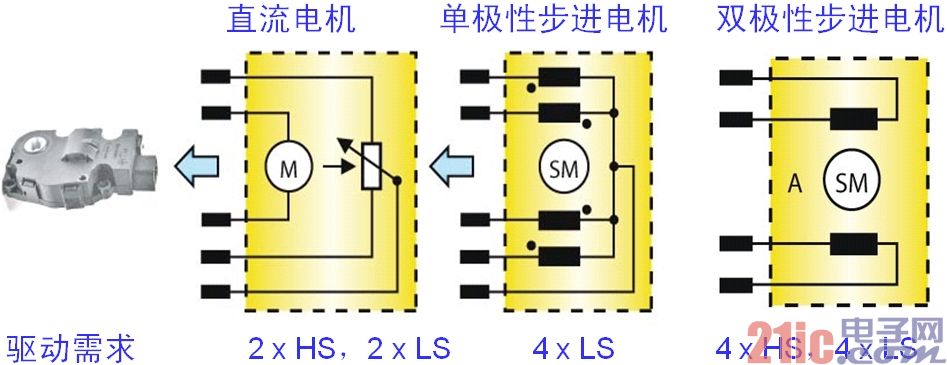
Figure 4: Motor structure and drive requirements for automotive air conditioning damper actuators
The operating current of the DC motor damper actuator is generally around 100 mA, and the maximum stall current is less than 450 mA. In addition, an H-bridge drive is required to change the direction of travel. The motor drive also requires a diagnostic report and provides adequate protection. ON Semiconductor's NCV77xx family of devices can be used to drive DC motor damper actuators such as the NCV7718. The NCV7718 is a six-way half-bridge driver with high and low sides connected inside the driver chip and output as an H-bridge. The device uses a 6-channel PMOS for high-side drive and a 6-channel NMOS for low-side drive. It provides 0.55 A continuous drive current and integrates an internal freewheeling diode. The NCV7718 operates in forward, reverse, braking and high-impedance modes and can be controlled via a 16-bit SPI interface with protection features specifically designed for automotive and industrial operation control applications such as undervoltage and overvoltage lockout. Flow protection, over temperature protection, underload protection, and identification of fault reports.
In addition to DC motor drives, ON Semiconductor also offers unipolar and bipolar stepper motor drivers for automotive air conditioners. ON Semiconductor's unipolar stepper motor drivers include the NCV7608 and NCV7240. Among them, the NCV7608 is an 8-channel high- and low-side configurable driver that provides 350 mA of drive current per channel and provides complete protection. The NCV7240 is an 8-channel low-side driver that can deliver 600 mA of drive current per channel. Bit SPI interface control also provides comprehensive protection functions (such as open circuit diagnostics, overload protection and over temperature protection). Both devices are available in SOIC28 and SSOP24 packages.
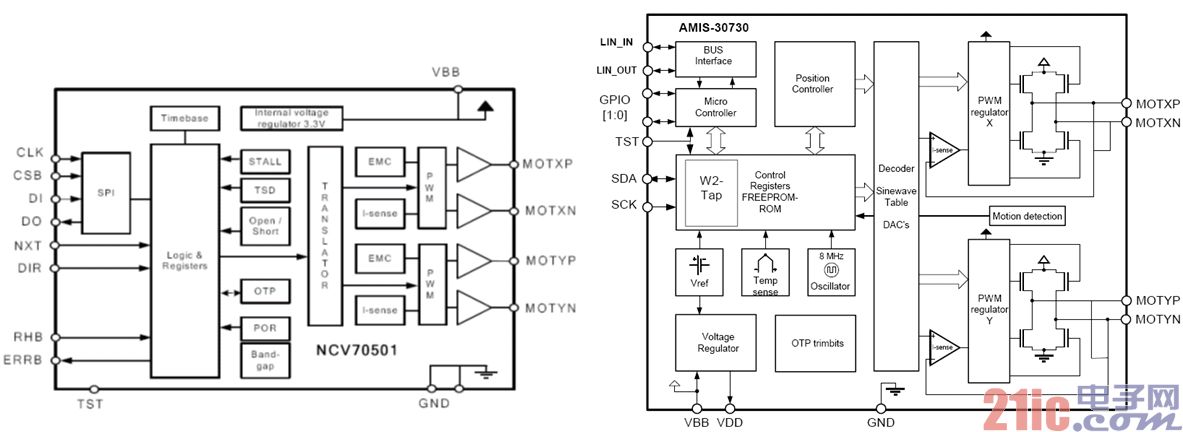
Figure 5: Block diagram of ON Semiconductor NCV70501 and AMIS-30730 bipolar stepper motor drivers
ON Semiconductor's bipolar stepper motor drivers for automotive air conditioners include the AMIS-30730 and NCV70501. The intake damper of automotive air conditioners requires a low noise design because this actuator is in continuous operation mode. Low noise is achieved with a bipolar stepper motor driver such as the NCV70501. The NCV70501 drives the stepper motor through the H-bridge. You can change the direction and number of steps of the motor by setting internal registers. The AMIS-30730 is a single-chip intelligent stepper motor driver solution that includes a bipolar stepper motor driver, a microcontroller (MCU) core, a LIN interface, ROM, RAM, and EEPROM.
External load high side or low side driver
In addition to the damper actuators, it is also necessary to drive or control external loads, such as central electrical boxes. ON Semiconductor offers SmartFETs for external load drive for high-side or low-side drivers such as the NCV8440, NCV8401/2/3/5/6 low-side drivers, and high-side drivers such as the NCV8450 and NCV8452. These SmartFETs are protected MOSFETs that add a variety of protection features and high-side or low-side drivers to the power MOSFET. Taking the NCV8452 high-side SmartFET as an example, the device has an on-resistance of 200 mΩ, an overvoltage protection level of 41 V, and an output current limit of 1 A. It integrates rich protection features such as short-circuit protection, overload protection, and over-temperature. Shutdown and auto-restart, internal clamp diode overvoltage protection, ESD protection, and logic level control.

Figure 6: High-side or drive architecture for automotive air conditioning external loads and high-side driver NCV8452 application example
Motor driver and MOSFET for blower
Blower is an important part of automotive air conditioning, including brushed DC motors and brushless DC motors. When using a brushed DC motor, PWM control is used, and the maximum operating current is 30 A, which requires the use of a power MOSFET. When using a brushless DC motor, a pre-driver and a power MOSFET are required. ON Semiconductor offers three-phase pre-drivers for brushless DC motors such as the LV8901, LV8902 and MC33033/5. ON Semiconductor also offers a range of power MOSFETs for blower drives such as NVB5860N/NL, NVMFS5830NL, NVMFS5832NL, NVB5404N, NVB5405N, NVD5802 and NVD5890N.
Constant current driver for automotive air conditioning
ON Semiconductor's constant current regulator (CCR) based on self-biased transistor (SBT) technology can also be used to drive LEDs in automotive air conditioning applications. These LED drivers include a dual-ended adjustable output version and a three-terminal adjustable output version for low noise systems. These CCRs have built-in LED thermal protection that can replace low-cost LDOs, suppress LED brightness variations due to voltage fluctuations, and pass automotive-grade product certification to help reduce design/certification time. These low current CCR LED drivers include the NSI50010YT1G, NSI45015WT1G, NSI45020T1G, NSI45020AT1G, and NSI45020JZT1G.
Other products for automotive air conditioning
Today's automakers design decentralized, distributed systems that are interconnected through industry standard interfaces such as LIN, CAN and FlexRayTM. ON Semiconductor offers these standard interface technology automotive bus transceivers, including the NCV7321 LIN transceiver for automotive air conditioning. The device has a maximum communication rate of 20 kbps and features high-voltage analog and digital functions. It complies with the European LIN physical layer specification version 2.1 and the US SAE J2602-2 specification. It meets OEM requirements and provides excellent electromagnetic compatibility (EMC) performance. System ESD Protection capacity is up to 13 kV.
In addition, ON Semiconductor also offers a variety of System Basis Chips (SBCs). These system-based chips integrate in-vehicle networks (such as transceivers such as LIN, CAN, and FlexRayTM), power supplies (such as linear regulators, DC-DC regulators), and monitoring (such as watchdog, SPI, status, interrupts). , as well as I/O and so on. Among them, the SBC for automotive air conditioning applications is like the NCV7420 and NCV7425. These devices integrate LIN transceivers and 3.3 V or 5 V regulators with output current capability of 50 mA and 150 mA, respectively.
to sum up:
Automotive air conditioning is one of the core applications of ON Semiconductor in automotive applications. ON Semiconductor offers a range of products for automotive air conditioning applications, including power supplies (such as LDOs and voltage followers), motor drivers, SmartFET high-side/low-side drivers, discrete components (power MOSFETs, CCR LED drivers), and automotive networks. Transceiver and system base chip. ON Semiconductor will continue to develop high-performance standards and special-purpose devices to meet the increasingly demanding requirements of automotive air-conditioning, and to continuously improve the safety, reliability and fuel economy of automotive air-conditioning systems with superior products.

Pay attention to ON Semiconductor's official WeChat to learn more innovative and energy-efficient solutions
JoyLED is professional manufactor providing indoor and outdoor LED Module with different shaps such as V-shape, soft module, etc.
1. Led Module Including the Data & Power Cables.
2. NICHIA/CREE/NATIONSTAR gold wires LED lamps, Fast Shipping within 5 working days in 24 hours,Free Tech Support.
3. LED Module Can Work With Colorlight,novastar,linsn,huidu control system etc.
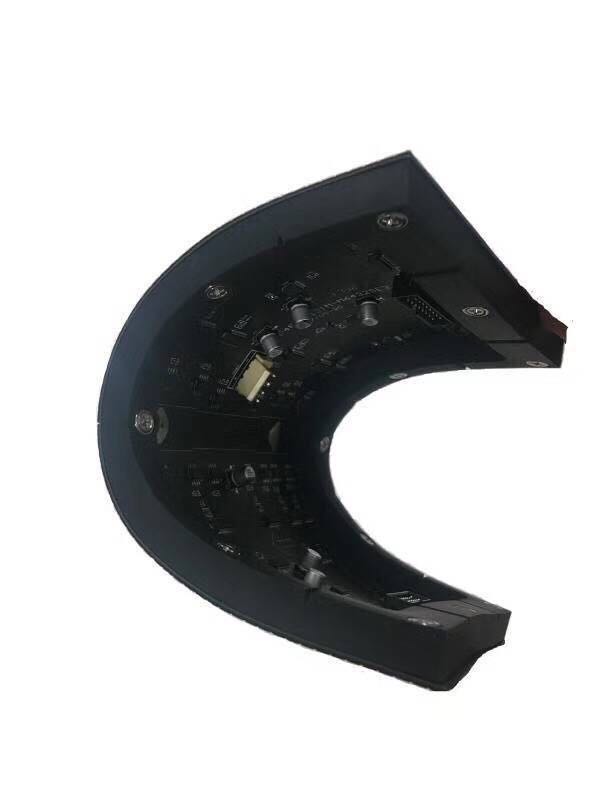
Sector Led Module,Led Display Module,Creative Led Display Module,Sector Led Display Module
Shenzhen Joy LED Display Co., Ltd. , https://www.joe-led.com